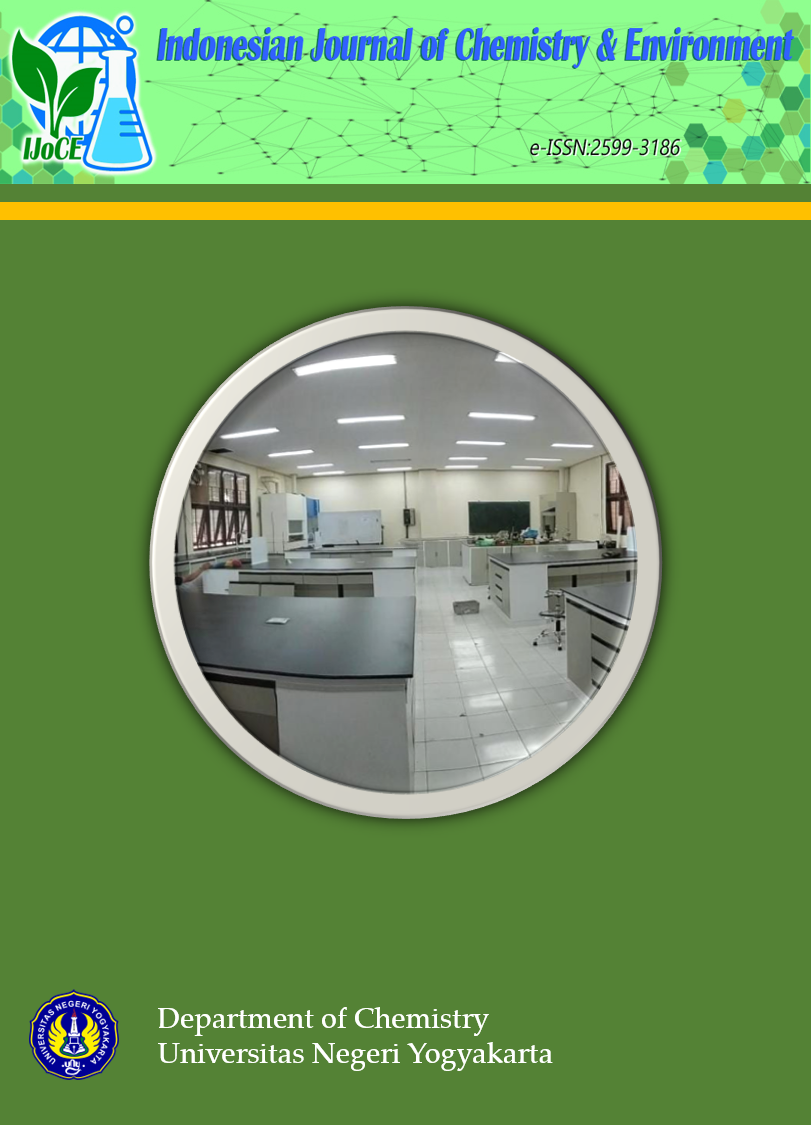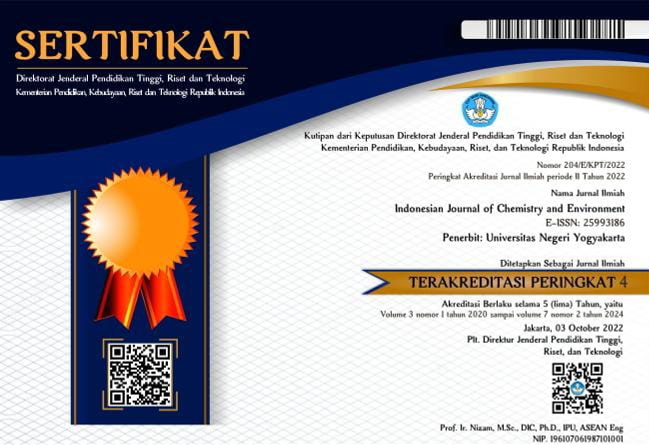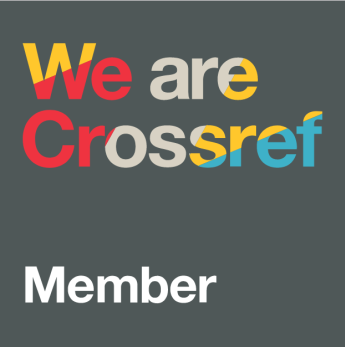Effectiveness of Peanut Shell Activated Charcoal as Adsorbent of Chromium and Lead Metal Ions Using Continuous System
DOI:
https://doi.org/10.21831/ijoce.v8i1.88518Abstract
This study aims to determine the characteristics of peanut shell adsorbents based on SNI 03-3730-1995, the optimum conditions, efficiency and adsorption capacity of Cr and Pb metals in textile industry waste (simulated waste), and the morphology of the adsorbents. Peanut shells were converted into activated carbon by carbonization in a furnace at 450 °C for 5 minutes, then ground and sieved to a 60 mesh particle size. The carbon was chemically activated using a 0.5 M NaOH solution for 24 hours. Adsorption experiments employed a continuous system with variations in adsorbent mass (0.3, 0.6, and 0.9 grams), flow rate (slow and fast), and simulated Pb:Cr ratios (1:1, 1:2, and 1:3 (v/v)). The characterization results of activated carbon include moisture content of 3.99%, ash content of 7.46%, volatile matter content of 53.88%, iodine adsorption of 355.32 mg/g, and carbon content of 74.497%. Surface morphology showed porous structure with a pore diameter of 919.34 nm. The optimal conditions for the adsorption of Pb and Cr metals were an adsorbent mass of 0.9 g, slow flow rate, and a simulated waste ratio of 1:2. Adsorption efficiency for Cr and Pb metals was 73.33% and 100%, respectively, with adsorption capacities of 14.2902 mg/g and 2.0286 mg/g.
Downloads
Published
How to Cite
Issue
Section
Citation Check
License
Copyright (c) 2025 Devi Heryanti, Susila Kristianingrum

This work is licensed under a Creative Commons Attribution-ShareAlike 4.0 International License.
Authors who publish with this journal agree to the following terms:
- Authors retain copyright under a Creative Commons Attribution–ShareAlike License (CC BY SA) that allows others to share: copy, and redistribute the material in any medium or format, Adapt: remix, transform, and build upon the material, for any purpose, even commercially.
- Authors are able to enter into separate, additional contractual arrangements for the non-exclusive distribution of the journal's published version of the work (e.g., post it to an institutional repository or publish it in a book), with an acknowledgement of its initial publication in this journal.
- Authors are permitted and encouraged to post their work online (e.g., in institutional repositories or on their website) prior to and during the submission process, as it can lead to productive exchanges, as well as earlier and greater citation of published work.










